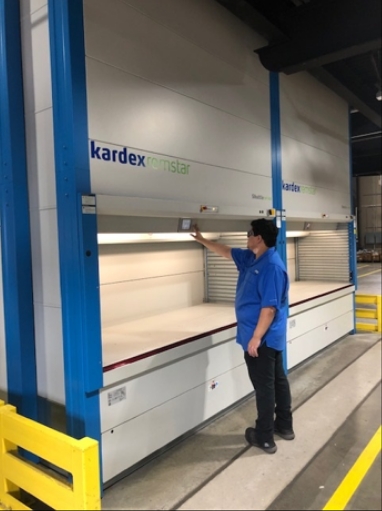Best Practices for Warehouse Management
Proven Methods to Maximize Productivity, Accuracy, and Space Utilization
Why Warehouse Management Best Practices Matter
A warehouse’s success depends on how well people, processes, and systems work together. Without a consistent management framework, operations can quickly become inefficient and reactive.
At Vertical Storage USA, we help warehouse managers implement industry-proven best practices that drive measurable improvements in:
- Order accuracy and fulfillment speed
- Labor productivity and workflow balance
- Inventory visibility and control
- Floor space utilization
- Safety, compliance, and employee satisfaction
Learn how these practices connect with overall Warehouse Operations & Efficiency for a smarter, scalable facility.

Core Best Practices for Modern Warehouse Management
Step 1: Optimize Layout and Flow
The foundation of good management starts with an efficient warehouse design.
Our Layout & Design strategies create organized, accessible environments where travel paths and picking zones minimize wasted motion.
Key layout principles:
- Place high-velocity SKUs near picking and packing areas
- Align aisles for efficient forklift access
- Separate receiving, staging, and outbound areas to avoid congestion
- Reserve space for future expansion and automation
For in-depth guidance, see Warehouse Space Optimization.

Step 2: Implement Standardized Processes

Standardization improves consistency, reduces downtime, and simplifies training.
By developing Warehouse Processes & Procedures, you’ll ensure:
- Predictable picking, replenishment, and putaway routines
- Accurate cycle counting and inventory reconciliation
- Documented safety and compliance checkpoints
Clear SOPs also make automation integration smoother, whether you’re using AS/RS Systems or Storage Robots.
Step 3: Use Technology for Real-Time Visibility
Digital visibility is the backbone of efficient warehouse management.
Our Inventory Management Software and Automated Shelving & Inventory Tracking systems let you:
- Track product movement in real time
- Monitor KPIs like lines picked per hour or inventory accuracy
- Identify bottlenecks before they impact throughput
- Generate performance reports for data-driven decisions
Integrating these systems with your ERP creates one continuous information loop from receiving to shipping.

Step 4: Invest in Automation and Smart Equipment

Automation improves consistency, reduces labor costs, and supports growth.
Start small with modular systems such as:
- Vertical Lift Modules (VLMs) for small-parts picking
- Horizontal Carousels for high-volume SKU access
- Mobile Aisle Storage Systems for flexible density
Light-Directed Picking Systems to reduce picking errors
Each automation step compounds efficiency without requiring a full facility overhaul.
Step 5: Train and Empower Employees
Even the most advanced warehouse depends on knowledgeable, confident staff.
We help management teams create structured onboarding and continuous improvement programs that include:
- Role-specific SOPs and process maps
- Performance tracking and feedback systems
- Safety awareness and equipment training
- Clear communication and accountability channels
Our Warehouse Consultants can design a custom training framework for your operation.

Step 6: Measure, Audit, and Improve

Top-performing facilities operate with a “continuous improvement” mindset.
Regular audits of layout, inventory control, and safety keep your warehouse efficient and compliant.
Use the Warehouse Optimization Checklist to track progress and identify new opportunities for improvement.
Key Benefits of Strong Warehouse Management
Higher Productivity
Clear processes and efficient systems increase throughput without adding headcount.
Better Space Utilization
Strategic layout and Racking & Shelving Systems unlock more cubic storage capacity.
Fewer Errors
Automated picking and digital tracking reduce manual mistakes.
Smarter Decisions
Data visibility enables proactive planning instead of reactive fixes.
Improved Safety and Compliance
Adhering to Warehouse Safety standards protects workers and keeps operations running smoothly.
Frequently Asked Questions (FAQs)
Do you provide warehouse management consulting?
Yes — our Warehouse Consultants assess your workflows, systems, and processes to identify areas for improvement.
Can we improve management without full automation?
Absolutely. Process improvements and layout optimization alone can deliver fast ROI and productivity gains.
What metrics define warehouse management success?
Common KPIs include pick accuracy, on-time shipments, space utilization rate, and labor cost per order.
Do you help create management reports or dashboards?
Yes — our Inventory Management Solutions integrate with WMS and ERP systems to visualize data and performance trends.
Ready to Improve Your Warehouse Management?
We’ll assess your facility, review your current practices, and deliver a customized roadmap to streamline your operations.


